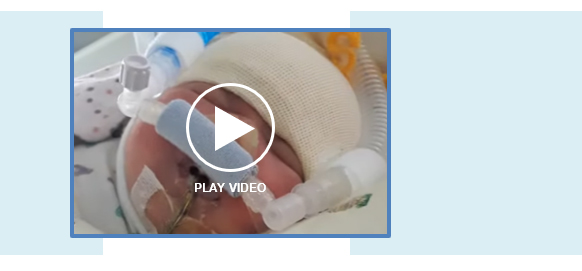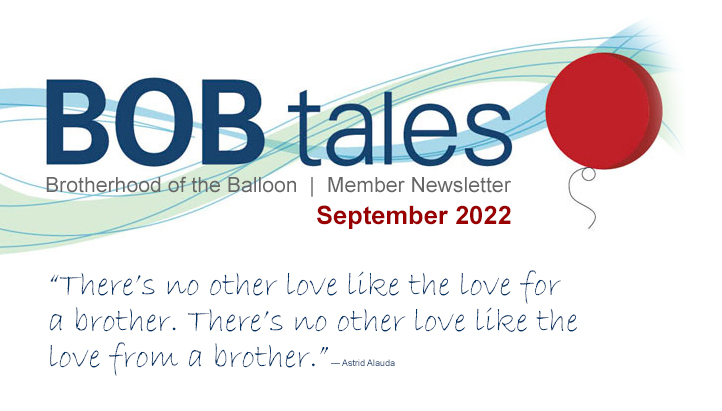
Dear Members (a note from Bob Marckini):
I lost my big brother last month. He was the patriarch of our family and my best friend. I wrote about Gene in both editions of my book as he played a major role in my life and heavily influenced my prostate cancer journey.
Because my father – a high-ranking police official – worked long hours when I was young, Gene, in many ways, became my surrogate father. He helped me with homework and taught me the ways of the world. I always looked up to Gene and wanted to be just like him. He was tall and strong and smart. Whenever I was hurting, he was there to fix the problem or ease the pain, like the time he taught me how to ride a two-wheeled bike and I ran it into a tree.
Whatever Gene did, I wanted to do. He had an erector set and so did I. He had a chemistry set and I wanted one too. As we got older, Gene became interested in archery and so did I. He graduated to target practice with a .22-caliber rifle, which he passed on to me, a single bolt .22 Savage.
Gene went to Northeastern University to study chemical engineering and so did I. I joined the ROTC and won awards in the rifle club, just as my big brother did before me. Scuba diving was something else he introduced me to. I spent many hours floating weightlessly while exploring the fascinating world under the sea.
Gene taught me how to alpine ski and water ski. And when I was in college struggling with differential calculus, Gene, a second lieutenant in the Army, coached me over the phone.
Gene’s passion was flying. That’s where I drew the line. I didn’t like small planes. He grew to become an incredibly accomplished pilot, and ironically, one of the world’s worst automobile drivers.
One time Gene suggested we fly in his plane from Bedford, MA, to Steubenville, OH, to visit his two children and my older daughter who were all students at Franciscan University. At that time, he’d been flying for only a couple of years. He had a small Piper Cub 150 two-seater, with minimal instrumentation, and he wasn’t yet instrument rated.
The weather deteriorated rapidly along the way, and we found ourselves zig-zagging around more than two dozen electrical storms that lit up his storm scope. He maneuvered the aircraft masterfully around the storms, all while maintaining contact with the air traffic controllers, switching radio frequencies as necessary.
We found the tiny airport in Steubenville, which from 5,000 feet looked like a private driveway. He put the aircraft down, soft as a feather, and secured the plane so we could pick up our rental car. I remember thinking at the time that Gene handled the plane flawlessly, like Arthur Fiedler conducting the Boston Symphony Orchestra.
But then the fun began. We had a short drive to the university, maybe six miles. During that time, we got lost twice, went through three stop signs, hit a couple of curbs, and came close to getting T-boned at a busy intersection when he drifted through a yellow light. I never felt safer than when we were dodging thunderstorms in my brother’s plane; and I never felt more terrified than when I was a passenger in his car.
As you can see from the photo of Gene and me, he graduated to larger and more complex planes. The one pictured is a fully instrumented Beechcraft Bonanza, an incredible aircraft that he absolutely loved.
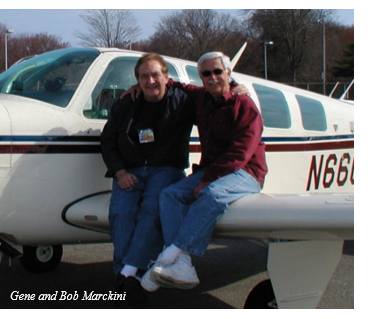 I learned so much from Gene. He taught me things to do and things not to do. Dealing with prostate cancer fell into the latter category. In a very compelling way, he showed me, quite graphically, what not to do in this case. When Gene was diagnosed with prostate cancer in the late 1990s, he did what most men did – he asked his urologist’s opinion. “Go with the gold standard,” his doctor said. “Surgery’s your best option.”
I learned so much from Gene. He taught me things to do and things not to do. Dealing with prostate cancer fell into the latter category. In a very compelling way, he showed me, quite graphically, what not to do in this case. When Gene was diagnosed with prostate cancer in the late 1990s, he did what most men did – he asked his urologist’s opinion. “Go with the gold standard,” his doctor said. “Surgery’s your best option.”
In the preface of my new book, I wrote about my experience of driving Gene to the hospital and observing him in the recovery room right after surgery. You can listen to that short segment of my audible book here.
It was in the recovery room at that Boston hospital I made a promise to myself: if I’m ever diagnosed with prostate cancer, I’m going to find something much better than surgery. And I did. That’s just one more thing I owe to my brother. There never would have been a “Brotherhood of the Balloon,” my two books, or this newsletter if it hadn’t been for Gene.
Gene passed away last month, and his funeral service was held in northern Ontario, Canada, where he’s buried next to his wife, Toni, in the little town of Bancroft. Incidentally, there’s one more thing we had in common. We both married women from the north: Toni from Ontario and my wife, Pauline, from St. Johnsbury, VT, a stone’s throw from the Canadian border.
Everyone should have a brother like Gene – smart, loving, caring, and fiercely devoted to and protective of his family. Also, there was no better friend than Gene. He spent a large part of his life helping others. So many people have come forward over the past few weeks sharing stories of how he helped them.
Thank you to all who called, sent cards, prayers, and other expressions of sympathy and understanding. Your kindness and thoughtfulness are very much appreciated.
I’ll miss my big brother.
-------------------
This month we report on a couple of articles on the possible renaming of “Gleason 6” prostate cancer to something that doesn’t include the word “cancer” at all. Find out who’s in favor, who’s not, and why. Also in this issue, we include another example of a man diagnosed with late-stage prostate cancer who waited too long to be screened, and another – one of our oldest members – whose urologist was asleep at the switch. This could have cost this man his life, but he’s 90 years old and thriving.
This month, we announce the official launch of the first standalone liquid biopsy urine test for prostate cancer. We report on a new study that suggests a diet including significant amounts of processed meats could raise prostate cancer risk. We tell you if onions can help prevent cancer. We explain why it’s so important to strengthen your gut health and tell you how to do it. And finally, we list the many reasons water is essential to good health.
As always, we love to get feedback on the newsletter, and welcome any suggestions you have on how to improve the value of the BOB Tales to our members. Just send an email to [email protected].
Bob Marckini
To print the BOB Tales newsletter or view the newsletter with a larger font size, click here for the PDF file. .jpg)
.jpg)
In This Issue:
- Gleason Score 6 – Not Cancer?
- Once Again, a Lapse in Screening Can be Costly
- Urine-based Prostate Cancer Biopsy Test Available
- Prostate Cancer: Study Names Worst Eating Habit
- Can Onions Help Prevent Cancer?
- Given a Death Sentence, Thriving 24 Years Later at 90
- The Link Between Gut Microbiome and Prostate Cancer
- The Power of Water
Gleason Score 6 — Not Cancer?
First the United States Preventive Services Task Force (USPSTF) recommended against PSA testing, claiming it was causing harm through overtreating patients. We’ve written about this before and also covered the topic in Bob’s new book. The problem, we wrote, wasn’t over diagnosis, it was overtreating patients, many of whom could easily have done active surveillance. As a result of the USPSTF action in 2012, there was a doubling in the diagnoses of advanced/metastatic prostate cancers, which likely would have been caught through annual screening. Fortunately, the USPSTF saw the error of its ways, backed down on its position, and is taking a more measured position on the topic of prostate cancer screening.
Now, there may be a movement by one prominent medical expert to downgrade Gleason 6 (Grade Group 1) prostate cancer to a “pre-cancer” or “non-malignancy” stage. Dr. Scott Eggener, an associate professor of surgery and urologic oncology at the University of Chicago Medicine, has proposed this prospect be considered in an article, “Low-grade Prostate Cancer: Time to Stop Calling it Cancer,” published in the Journal of Clinical Oncology April 18, 2022.
An article titled, “Declassifying Gleason 6 as Cancer Would do More Harm Than Good,” published in Urology Times last month, addressed this issue. The authors, Richard Harris, MD, David Crawford, MD, and Brian Myre, MD disagree with Dr. Eggener. It’s their position that although Gleason 6 prostate cancer is early stage and carries a very low risk of eventual metastasis, it’s still cancer. Reclassifying it as pre-cancer carries the risk of patients not following up on the steps prescribed when doing active surveillance. These steps include follow-up PSA blood tests, digital rectal exams, imaging tests, and even periodic biopsies as necessary.
► BOB Comment: We agree with the authors of this article: Re-staging Gleason 6 prostate cancer as “pre-cancer,” like the USPSTF action, would be like “throwing the baby out with the bath water.”
Not all Gleason 6 prostate cancer patients are the same. Depending on the patient’s age, family history, PSA progression, and other factors, some may be more vulnerable to disease progression than others.
While Gleason 6 prostate cancer has extremely low metastatic potential, it’s still cancer and should be closely monitored using the steps prescribed by the active surveillance protocol.

Once Again, a Lapse in Screening Can be Costly
Last month, a gentleman told us his father died from prostate cancer. He then admitted he’d met with his primary care doctor only sporadically over the years and even then, didn’t have regular PSA tests or DREs. Further, he skipped doctors’ visits completely for the past three years, “because of COVID,” he said. A recent blood test revealed a PSA of 45. He purchased and read Bob’s book, then emailed us asking for our advice.
We reminded this man that we’re not physicians and can’t give medical advice, only our opinion. And our opinion was that he should see a urologist and discuss having a prostate biopsy. We also suggested he ask about the new PrecisionPoint transperineal biopsy (PPTB), which is quicker and safer than the old fashioned transrectal biopsy.
He met with his urologist, had the PPTB, and discovered he had Gleason 9 prostate cancer. He’s in the process of confirming his biopsy results with a second opinion from Johns Hopkins.
This gentleman is facing at least two years of androgen deprivation therapy (hormonal therapy) plus primary external beam radiation therapy.
This Doesn’t Have to Happen
Not everyone who skips annual physicals has results like this. Fortunately, prostate cancer is usually slow growing. But, skipping simple annual screening tests can result in missing prostate cancer (and other diseases) at early stages when they can best be dealt with, often with curative results.
For the past several months, we’ve been reviewing – from Bob’s book – the “Ten Steps for Taking Control of the Detection and Treatment of Your Prostate Cancer.” Step #1, the most important step, is to “Choose Your Doctors Wisely.” And this begins with your primary care physician, who is “your first line of defense,” as Bob explains. But the best doctor in the world can’t help you find and destroy prostate cancer if you don’t visit him/her regularly.
Although this is pretty obvious, it’s amazing how many times each year we hear stories similar to the one here. Please remind your family members and friends of this critically important first step in managing your health: Choose your doctors wisely – and be vigilant about having annual physicals which should include prostate cancer screening.

Urine-based Prostate Cancer Biopsy Test Available
miR Scientific recently announced the launch of its miR Sentinel™ test – the first standalone, non-invasive liquid biopsy urine test for prostate cancer. Unlike other blood and urine tests, the miR platform produces a molecular characterization of the likelihood of malignant disease progression, allowing for more accurate results.
Using molecules derived from urine, scientists can classify patients into four possible groups: no molecular evidence of prostate cancer; low-risk; intermediate-risk; or high-risk prostate cancer.
According to developers, the specificity and sensitivity of the test may reduce mortality rates and decrease the number of hospitalizations, physician visits, and shorten recovery time.
Data Confirm Test’s Accuracy
A recent study confirmed the test can detect and risk-classify prostate cancer at the molecular level with predictive accuracy of over 90 percent, based on a single urine sample.
When comparing results of the miR Sentinel test to systematic core needle biopsy, the study demonstrated a 93 percent concordance between the two screening methods and detection regarding the classification of clinically significant cancer. This sets a new bar for detecting and classifying prostate cancer. The data also demonstrate the strong negative predictive value of the Sentinel test with results showing the test correctly identified 96 percent of men as having non-clinically significant cancer.
The miR Sentinel test is commercially available in the U.S., Puerto Rico, and select international markets.

Prostate Cancer: Study Names Worst Eating Habit
 A new study suggests a diet that includes a significant amount of processed meats could raise prostate cancer risk. Researchers also discovered that men who had a greater genetic risk of prostate cancer could mitigate their risk of death by nearly 50 percent by adopting a healthful lifestyle.
A new study suggests a diet that includes a significant amount of processed meats could raise prostate cancer risk. Researchers also discovered that men who had a greater genetic risk of prostate cancer could mitigate their risk of death by nearly 50 percent by adopting a healthful lifestyle.
For this study, researchers took blood from 12,000 men during the 1980s and 90s. They also collected data regarding various aspects of their lifestyles. Data included diet, weight, level of physical activity, and whether they were a smoker. Researchers used that information alongside a 2021 genome-wide association study to determine that men who had a greater genetic risk for developing prostate cancer reduced the risk of fatal prostate cancer by 45 percent.
“Having a high genetic risk is often viewed as something very deterministic, but our findings suggest it may not be,” said Anna Plym, Ph.D., from Brigham and Women’s Hospital in Boston. “Through lifestyle modifications, early screening, and early treatment we may be able to deal with high genetic risks.”
Those behind the study described healthful eating as a diet rich in fish and tomatoes (high levels of lycopene), but not sugar, processed meat, and other processed foods. They also stressed the importance of maintaining a healthy weight, getting a significant amount of exercise, and not smoking.
“I think the most surprising aspect to most people would be how much diet plays a role in cancer risk, especially a heritable cancer risk, and how a healthful diet and lifestyle can attenuate that risk so significantly,” said Dana Ellis Hunnes, Ph.D., MPH, RD, senior clinical dietitian UCLA Medical Center, assistant professor UCLA Fielding School of Health, and author of Recipe for Survival: Eat This, Not That!
► BOB Comment: The researchers also mentioned that because prostate cancer is affected by hormone levels, this may explain why those who consume high levels of cow’s milk are at a greater risk of prostate cancer than those who avoid milk. We wrote about the dangers of drinking milk in our last newsletter.
We’ve been producing BOB Tales newsletters for more than 20 years. During this time there have been articles that many new members haven’t seen, and some older members may have forgotten. So, we periodically re-run articles from past newsletters. The following is from February 2007.
Can Onions Help Prevent Cancer?
Chopped, sautéed, roasted, or caramelized … onions liven up the flavor of your foods and boost your cancer-fighting defenses. The bonus: Onions are a low-calorie veggie bursting with flavonoids, vitamin C, and chromium. Why not make an onion-a-day a habit? If teary eyes stop you, chill the onion before cutting. Stinky fingers a problem? Swipe your digits with a slice of lemon or a splash of vinegar. Bad breath? Nibble on parsley or apple slices. Or cook the onion first, to release some of the sulfur compounds.
To ancient Egyptians, the onion was a symbol of eternity, and that belief may not have been far from reality. Today, scientific evidence is showing that onions and garlic, another vegetable-like herb in the Allium family – may promote longevity by keeping cancer from gaining a foothold.
Studies in China, France, and the U.S. have shown that onions protect against different cancers, and a large Italian and Swiss study has confirmed those results. By comparing the onion and garlic habits of cancer-free people to those hospitalized with a malignancy, researchers found that the more often a person ate the bulbs in ny form, the lower the cancer risk. And the benefit was good for many types of tumors, including those of the mouth, throat, esophagus, colon, kidney, breast, and prostate.
► BOB Comment: A more recent study on the effect of onion extracts on PSA and acid phosphatase in rats found that PSA and AP were decreased in the rodents that were given onion extract. This might suggest that onion extract could be beneficial in the prevention and treatment of prostate cancer.
Given a Death Sentence, Thriving 24 Years Later at 90
Bob Reimer is one of the best examples of why each of us must take responsibility for our own health. Bob’s urologist was asleep at the switch; He never paid attention to Bob’s rising PSA. It wasn’t until it rose to 61 that Bob learned he had the most aggressive form of prostate cancer.
Bob was born in Reedley, CA. While still in grade school, he moved closer to the Bay Area in the northern part of the state, where he’s lived to this day. Bob served four years in the Navy and received a Letter of Commendation from the Commanding officer of the USS Manchester CL83. He next worked for the Pacific Gas and Electric Company for 35 years, retiring in 1990. During that time, Bob got married, built two homes, and had two daughters. Bob and his wife, Audrey, became active in their church, feeling blessed to have so many friends for fellowship and support. Bob served on the board of his Home Owners’ Association, and worked inside and outside of the house, building and fixing things. His pet project at the time was restoring a 1935 Chevy 5-window coupe.
PSA 61, Gleason 10
Bob’s prostate cancer story began as a nightmare. He was diagnosed in 1998 with a PSA of 61 and a Gleason score of 5+5=10. That’s right – PSA 61, Gleason 10. “It doesn’t get much worse than that,” Bob said. “When I was diagnosed, my doctor told me I probably had one year to live.”
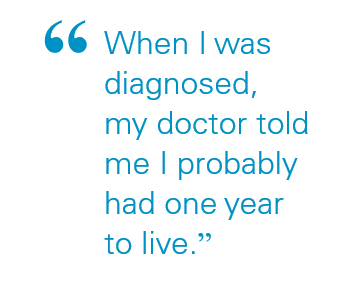 “Maintaining a sense of meaning and purpose played a significant part in my survival,” Bob said. “Being given a death sentence by my urologist felt like a massive shotgun blast to my entire world. I felt angry, confused, powerless, and devastated. He told me I should go home and get my house in order. ‘What? Get my house in order? You’ve got to be kidding!’ Then denial set in. I thought, ‘It’s just not fair! I’m 66 years old and have played by the rules.’ I quickly learned that the diagnosis was true and that cancer doesn’t discriminate by social class, good work, or any other aspect of life.”
“Maintaining a sense of meaning and purpose played a significant part in my survival,” Bob said. “Being given a death sentence by my urologist felt like a massive shotgun blast to my entire world. I felt angry, confused, powerless, and devastated. He told me I should go home and get my house in order. ‘What? Get my house in order? You’ve got to be kidding!’ Then denial set in. I thought, ‘It’s just not fair! I’m 66 years old and have played by the rules.’ I quickly learned that the diagnosis was true and that cancer doesn’t discriminate by social class, good work, or any other aspect of life.”
Getting angry is often part of the grieving process, and for Bob, it was also a productive call to action. There were so many unanswered questions and not much time to find the answers. Had the cancer spread outside the prostate? What treatment options did he have and which one would be the best for him? And where was God in all this?
A Urologist’s Honest Thoughts
Rather than playing the “blame game,” which wouldn’t change his diagnosis or help him survive, Bob focused on gathering information. The support of his family, including Audrey and their two daughters, Debbie and Denise, and their church, gave him the courage and motivation to do so.
The first line of defense in his treatment was Lupron hormone ablation therapy, which was used as the first step in his treatment regimen. Bob experienced immediate unpleasant side effects including weakness, fatigue, and depression. Fortunately, those side effects were short lived.
While doing his due diligence, Bob consulted with several doctors including a urologist at UC Davis Medical Center. The doctor confided in Bob that if he were ever diagnosed with prostate cancer, he’d have proton therapy at Loma Linda University Cancer Center.
Meanwhile, Bob learned that one of his neighbors had successfully been treated with proton therapy for his prostate cancer at LLUCC a couple years prior. Coincidence?
Prostate Cancer – A Privilege?
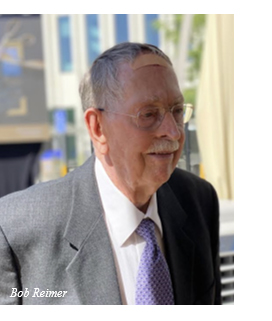 “I was hopeful, but had no idea just how much the experience of treatment would positively change my life,” Bob said. In fact, he says he feels he was “allowed to have prostate cancer” so that he’s able to direct others to proton therapy. He also credits God for looking out for him and giving him the wisdom and, most of all, the privilege to help others.
“I was hopeful, but had no idea just how much the experience of treatment would positively change my life,” Bob said. In fact, he says he feels he was “allowed to have prostate cancer” so that he’s able to direct others to proton therapy. He also credits God for looking out for him and giving him the wisdom and, most of all, the privilege to help others.
Bob is also thankful that he was “welcomed into the Brotherhood of the Balloon with open arms.” Being a part of such a large group of prostate cancer survivors made him feel more hopeful and not so alone in his journey.
He’s also grateful for the caring and competent medical professionals who handled his treatment at LLUCC. “The kind and attentive staff, coupled with an amazing, non-invasive treatment plan and a promising potential long-term outcome made me feel at ease.” As a gift of appreciation, Bob plans to make an estate gift to LLUCC.
Next month, Bob will turn 91, celebrating 24 years since completing proton treatment and a PSA close to zero. He continues to be active in his church, and spends a lot of time in his garden.
► BOB Comment: Remember, Bob was told initially that he had one year to live! We hope his story brings hope to newly diagnosed men and their families. We often receive emails and phone calls from men with high PSAs and Gleason scores. We typically direct them to Bob, and he is always helpful to them. Bob Marckini calls Bob Reimer “our secret weapon.” He’s the go-to guy whenever someone with a Gleason 8, 9 or 10 calls us and says, “Is there any hope for someone with a really aggressive cancer like mine?”
Bob Reimer says, “It is by the grace of God that I am living today. LLUCC provided the best possible treatment, but I am convinced that divine intervention was a big part of the healing process and the reason I was not called away from this life.”

The Extraordinary Impact of the LLUH President's Club
In 2015, Loma Linda University Health launched The President’s Club. It was designed to encourage annual giving starting at $1,500 (up to $24,999). The following story is one example of the many ways club members support LLUH’s healthcare efforts.
Gabriela: Bacterial Infection Threatens Baby’s Life
Baby Gabriela was born premature at 34 weeks gestation. At just two days old, she began to develop early signs of a very serious gastrointestinal condition that typically spreads through the bowels of premature infants and destroys their intestines.
“IVs everywhere, wires, tubes … It was almost unreal how bad she looked,” said Gabriela’s mother, Monique, through tears.
Gabriela’s surgeon, Dr. Andrei Radulescu, had to tell Monique and her husband, Juan, that premature babies affected by this condition typically don’t make it.
Monique said, “Do anything you can to save her life.”
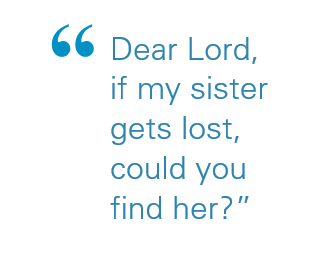 The risks were extremely high in operating on such a small body. Dr. Radulescu knew he had to work quickly and meticulously. He also knew that if he removed too much of the intestines, Gabriela would have to be fed through an IV for the rest of her life.
The risks were extremely high in operating on such a small body. Dr. Radulescu knew he had to work quickly and meticulously. He also knew that if he removed too much of the intestines, Gabriela would have to be fed through an IV for the rest of her life.
While Gabriela was in the NICU, Juan and Monique brought their other two children to visit one day. The first time they saw her, Jude and Maggie stood at her bedside, holding her tiny hands. Four-year-old Jude began to pray, “Dear Lord, if my sister gets lost, could you find her?”
After spending 75 days in the NICU, Dr. Radulescu told Juan and Monique that they could take Gabriela home in two days. Though she’d need another surgery down the road, he said he was excited they’d gotten to this point.
It’s Dr. Radulescu’s hope that sooon, no baby will have to go through what Gabriela did. “I have a research lab that focuses mainly on necrotizing enterocolitis to prevent NEC from happening and to treat it,” said Dr. Radulescu. “Our research is focused on developing a cure that can be given to babies who are at risk before they’re born.”
The research they’ve already done at LLUH is exciting. Dr. Radulescu is extremely hopeful that Loma Linda will be the place where this disease ends.
Philanthropic support provides world-class healthcare, enables LLUH to continue cutting-edge research and allows the hospital to train the very best healthcare professionals. Sustained giving offers hope and changes lives every day. Gifts may be designated to any area affiliated with the hospital including the Dr. James M. Slater Chair or the Robert J. Marckini Chair for proton therapy research.
Bob Marckini and his wife Pauline are members of the President’s Club. They make annual gifts and have also remembered Loma Linda University Health in their estate plan.
Learn more about the President’s Club.
Giving Options
|
|
|
.jpg)

The Link Between Gut Microbiome and Prostate Cancer
Researchers have found a significant difference in the gut microbiota of men with prostate cancer compared to men without the disease. Although the finding is an association, it could partly explain the relationship between lifestyle and geographical differences in prostate cancer.
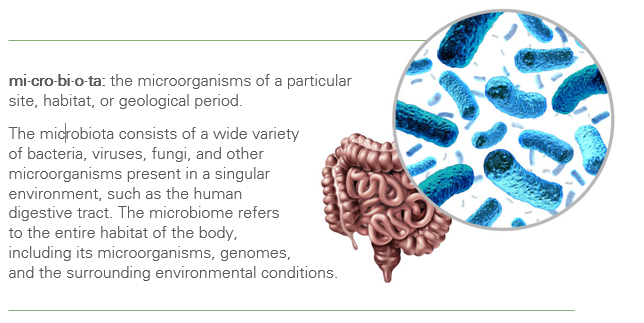
Trillions of microorganisms live in the human gut, both good and bad. The immune system and other bodily processes are directly affected by the balance in the gastrointestinal tract.
The state of gut microbiota can fuel the growth of tumors or make them resistant to treatment, and they’re also associated with diseases in organs located far from the intestines. Their role in prostate cancer is not entirely understood.
Researchers in Finland sequenced the gut microbiota of 181 men suspected to have prostate cancer. The samples were collected at the time of their prostate biopsies after MRI scans.
Sixty percent of the men were diagnosed with prostate cancer, and their gut microbiota profiles were significantly different from those who had benign biopsies. These men had increased levels of specfic types of bacteria that produce illness and diarrhea. They also had lower levels of other microbes.
“There are significant variations in prostate cancer rates around the world, which could be due to genetic factors or differences in healthcare policies, but also variance in lifestyle and diet,” said Professor Peter Bostrom from the University of Turku. “The difference in gut microbiota between men with and without prostate cancer could underpin some of these variations. More research is needed to look at the potential for using gut microbiota for both diagnostic and preventive strategies.”
“This is a striking finding from a large well conducted trial,” said Lars Dyrskjøt Andersen, Professor of Molecular Medicine at Aarhus University and member of the EAU22 Scientific Congress Committee of Urology. “We should be careful with observed associations when it comes to complicated epidemiology, and no cause-and-effect measures can be determined based on this, but certainly the gut microbiota could be an important area to investigate further to enhance our understanding of prostate cancer risk.”
► BOB Comment: There are several ways to strengthen your gut health. One option is to take probiotic supplements, of course you shouldn’t do so without first consulting your doctor. Foods that are a natural source of probiotics include fermented vegetables, kombucha, miso, kefir, and sauerkraut. Prebiotic-rich foods may help probiotics become more tolerant to certain environmental conditions. So boost your intake of asparagus, bananas, garlic, onions and whole grains. And of course, limit your intake of sugar and sweeteners. Finally, exercise regularly, sleep well, and don’t smoke!

The Power of Water
The following was abstracted from a USA Today article, written by Susan Bond, registered dietitian and nutritionist.
Water may be more important than you think. Here are some interesting facts about water:
- Water is used in virtually every bodily function
- Waste products are filtered out by our kidneys using water
- Our muscles use water in order to contract and move
- Absorption of nutrients and elimination of waste is managed by our digestive system using water
- Metabolism and fat burning rely on water
- Water should make up 50 percent of our body weight. Less than that may indicate dehydration.
- A rule of thumb is that we should drink eight cups (two quarts) of water each day. A better formula is one-half ounce of water for every pound you weigh. So, a 140-pound person should drink 70 oz a day of water. Add to that an additional 8 oz of water for every 15 minutes of exercise.
- People who drink proper amounts of water will …
- Lose weight more easily
- Have fewer headaches
- Look younger
- Concentrate better
- Have a healthier digestive system
- Have better skin, hair and nails
- Be generally healthier
Juices and other liquids containing water also count, with the exception of caffeine and alcohol, which are dehydrating.
People who drink enough water have better energy, sharper mind and less of an appetite. It’s always a good idea to start each day with 8 ounces of water, because people often wake up somewhat dehydrated after a long night’s sleep.
When you leave the house, make sure you have your phone, keys, wallet … and water.

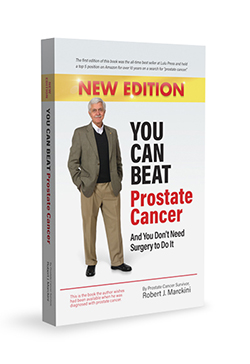 You Can Beat Prostate Cancer: And You Don’t Need Surgery to Do It –Second Edition
You Can Beat Prostate Cancer: And You Don’t Need Surgery to Do It –Second Edition
Still No. 1 or 2 on Amazon
There are more than 4,000 books on prostate cancer on Amazon. Bob’s book is still in the number 1 or 2 position in this category. The new book already has 168 reader reviews, almost all are 5-Star. Following is a recent review:

The Definitive Read for Every Man with Prostate Cancer … Period! This book educated and informed us on ALL the options available to me as a prostate cancer patient. We (my wife and I) read several good books, but none were as important, informative, and complete as Robert’s. I am 18 months post-treatment and leading a healthy, 100 percent normal life again. I definitely wouldn’t be this fortunate had I not read this book. If you’re considering embarking on any treatment for prostate cancer and haven’t read this yet, stop everything you’re doing and read this book cover to cover.
UK Movie Sound Tech Chose Proton Therapy After Reading Bob's Book
Orin Beaton, a sound technician at Lucasfilms in London, read Bob’s book and wrote an article, which was published in Metro News UK. After being diagnosed with Gleason 9 prostate cancer, he did a lot of research on treatment options. He ultimately chose proton therapy at the proton center in the Czech Republic. Apparently the two proton centers in the UK don’t treat prostate cancer.
Mr. Beaton considered Bob’s book to be the best resource he found, writing, “The Internet is a great source of information, but books written by those who had been through cancer felt truthful. My ‘page turner’ book is You Can Beat Prostate Cancer – And You Don’t Need Surgery to Do It, by Robert J. Marckini.”


Step 10 in the 10 Steps
Based on reader feedback, the most popular part of Bob’s book has been Chapter 18 where he outlines the 10 steps for taking control of the detection and treatment of your prostate cancer. Over the past few months, we’ve excerpted segments from the first eight steps in our monthly BOB Tales. Following is Step 10:
Maintain Your Physical and Mental Health
Regardless of the option you choose, your physical and mental health, as well as your attitude can make a huge difference in your treatment experience as well as the results of your treatment. Studies have shown those in better physical health and those with a positive mental attitude statistically have quicker recoveries and higher cure rates. Perhaps this is because the body’s immune system is a key factor in preventing regrowth and spread of cancer. Better physical and mental health support a stronger immune system.
If you’re not already actively involved in a physical fitness program, begin now. This can be as simple as walking a mile or two a day. Otherwise join a fitness club and work out three or four times a week. Include exercise that will improve cardiovascular fitness, such as jogging, swimming, stationary bike, rowing machine, or stair climber. Of course, you should check with your doctor before engaging in any new physical activity.
Eat a healthy diet. This means minimizing red meats, processed meats, animal fats, and most dairy products. Introduce healthy foods into your diet, such as soy products, fresh fruits, and vegetables. Exercise regularly and maintain proper body weight. Take selected vitamins and supplements to supply your body with nutrients missing from your diet. All these things can help slow or stop the progression of prostate cancer and also help prevent a recurrence.
If you’re in a high-risk group (e.g. family history or African American) be extra vigilant about diet, exercise, and monitoring key health measurements.
If you have significant anxiety about your diagnosis and your decision, speak with your priest, minister, or rabbi. Talk with your doctor or a therapist. Perhaps short-term anti-depressant or anti-anxiety medication will help you through the rough spots.
Frequent communications with men who have been successfully treated for prostate cancer can be of great benefit. There are Internet chat rooms, newsletters, man-to-man organizations and support groups of all types available to you. Joining a support group can do much to improve your knowledge, your attitude, and your confidence in the outcome of your treatment for prostate cancer.
In next month’s BOB Tales, we’ll summarize the 10 steps.


Did Bob's book help you?
If Bob’s book was helpful to you and you’d like to help others find it on Amazon, please write a review.
We’re happy to discount books in quantity to anyone who is interested in spreading the word on proton therapy. Just send an email to [email protected].
Proceeds from book sales are used to help fund our efforts and to support proton therapy research.

National Proton Conference
The 2023 National Association for Proton Therapy (NAPT) conference – Elevating Access, Research, and Innovation in the Field of Particle Therapy – will be held in Salt Lake City, UT, May 6-9.


Last Month’s Brain Teaser
You can solve this with high school math: Say you have a tank that measures one cubic mile in dimensions, and it’s filled with water. Next, you release the water at the rate of 1,000 gallons a minute. About how long would it take to drain the entire tank?
- 2 weeks
- 20 weeks
- 2 years
- 20 years
- 200 years
- 2,000 years
Answer: f. 2,000 Years
For those who really want to know, here’s the calculation:
- A one-mile cube would measure 5,280ft x 5,280ft x 5,280ft = 147,197,952,000 cubic feet.
- Take that number of cubic feet of water and multiply it by 7.48 gallons per cubic foot.
- Then divide that result by 1,000 gal/minute and it tells you how many minutes in total it would take to drain the tank.
- Finally, divide the total minutes by the number of minutes in a year, which is 525,600.
- This gives you 2,094 years.
It’s that simple!
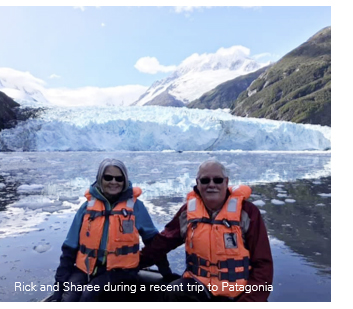 Winner: The winner of the July/August Brain Teaser is Richard (Rick) Reis of Lake Worth, FL. Rick received proton therapy at Loma Linda University Cancer Center in 2016. Since then, his PSA is close to zero and “holding steady.” Rick told us that he and his wife Sharee are happy and enjoying an active lifestyle which includes international travel and “keeping up with our 5-year-old grandson.”
Winner: The winner of the July/August Brain Teaser is Richard (Rick) Reis of Lake Worth, FL. Rick received proton therapy at Loma Linda University Cancer Center in 2016. Since then, his PSA is close to zero and “holding steady.” Rick told us that he and his wife Sharee are happy and enjoying an active lifestyle which includes international travel and “keeping up with our 5-year-old grandson.”
.jpg)
.jpg)
New Brain Teaser
This is for you creative thinkers …
What do the following words have in common – other than having three letters?
Cue, bee, tea, sea, eye, why, jay, are, pea, you?
Send your brain teaser answer to [email protected] for a chance to win a signed copy of Bob Marckini’s NEW second edition book, You Can Beat Prostate Cancer.
Quiz for Old Guys
The guys at the golf course asked me to name an actress I’d like to be stuck in an elevator with. I said, “the one who knows how to fix elevators.”


Then and Now
Things that used to hurt my back:
- Jumping off garage roofs
- Jumping off garage roofs
- Diving in the shallow end
- Crashing my bike
- Contact sports
- Falling out of a tree
Things that hurt my back now:
- Sneezing
- Tying my shoes
- Washing the dishes
- Rolling over in bed
- Brushing my teeth


Be Careful What You Wish For
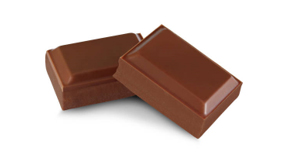 A young man was walking along a secluded beach when he came upon a half-buried bronze container. When he opened the lid, a genie popped out, thanked the man profusely for releasing him, and said, “You have freed me from my imprisonment, and for that, I will grant you three wishes – anything you want.”
A young man was walking along a secluded beach when he came upon a half-buried bronze container. When he opened the lid, a genie popped out, thanked the man profusely for releasing him, and said, “You have freed me from my imprisonment, and for that, I will grant you three wishes – anything you want.”
“Wow,” said the man, “This is fantastic! Okay, first I want 100 million dollars in a Swiss bank account.”
Poof! There in the sand was a statement from the Bank of Switzerland with the man’s name on it and a newly established bank account showing the sum of $100 million.
“Thank you, genie,” the man said. “Next I’d like to have a bright red Ferrari.”
Poof! There, about 10 feet away on the beach, appeared a fire-engine red $900,000 Ferrari 599 GTO with a title in the man’s name, and a solid gold key fob with a matching red ribbon.
“And, for my final wish,” he said, “I want to be completely irresistible to women.”
After a pause, there was a loud Poof! … And the man was instantly turned into a two-pound box of chocolates.


Our Solar System's Brightest Star
Source: Professor Herbert and GEO
The sun is responsible for the earth’s climate and weather. Did you know …
- The sun is 4.6 billion years old and made up of mostly hydrogen (70 percent) and helium (28 percent)
- The sun is more than 100 times wider than the earth and 330,000 times as big
- One million earths could fit inside the sun
- The sun generates enormous amounts of energy using a process called nuclear fusion
- The temperature inside the sun is 15 million degrees C, or 27 million degrees F
It takes eight minutes for the light from the sun to reach the earth
Strange but True Facts (Source)
“Sweating Like a Pig?” Impossible. Pigs don’t sweat. Swine are born without sweat glands. So when they need to cool off, their only option tends to be to find a cool puddle of mud.
A woman who lost her wedding ring found it 16 years later … on a carrot in her garden. Yes. It happened in Sweden. She lost it on Christmas 1995 and found it 16 years later with a carrot sprouting in the middle of it. She theorized the ring must have been lost in vegetable peelings that were turned into garden compost.
Cotton candy was invented by two dentists. Dr. John Wharton invented machine-spun cotton candy in 1897 and introduced it at the 1904 World’s Fair as “Fairy Floss.” Another dentist, Dr. Josef Lascaux, reinvented the machine in 1921 renaming it “cotton candy.”
.jpg)
.jpg)
Quote of the Month:
“The only place success comes before work is in the dictionary.” – Unknown



God Bless Parents Who Drugged Us
This was sent to us by one of our members…
The other day, someone in town heard that a drug lab had been found in an old farmhouse in the adjoining county and he asked me a rhetorical question, “Why didn’t we have a drug problem when you and I were growing up?”
I replied that I had a drug problem when I was young …
I was drug to church on Sunday morning. I was drug to church for weddings and funerals.
I was drug to family reunions and community socials no matter the weather. I was drug by my ears when I was disrespectful to adults.
I was also drug to the woodshed when I disobeyed my parents, told a lie, brought home a bad report card, didn’t speak with respect, spoke ill of the teacher or the preacher, or if I didn’t put forth my best effort in everything that was a asked of me.
I was drug to the kitchen sink to have my mouth washed out with soap if I uttered a profane four-letter word.
I was drug to the homes of family, friends, and neighbors to help out some poor soul, who had no one to mow the yard, repair the clothesline, or chop some firewood; and, if my mother had ever known that I took a single dime as a tip for this kindness, she would have drug me back to the woodshed.
Those drugs are still in my veins and they affect my behavior in everything I do, say, and think. They’re stronger than cocaine, crack, or heroin. If today’s children had this kind of drug problem, maybe the world would be a better place.
Low PSAs to all,
Bob Marckini and Deb Hickey
To print the BOB Tales newsletter or view the newsletter with a larger font size, click here for the PDF file.
NO MEDICAL ADVICE: Material appearing here represents opinions offered by non-medically-trained laypersons. Comments shown here should NEVER be interpreted as specific medical advice and must be used only as background information when consulting with a qualified medical professional.




